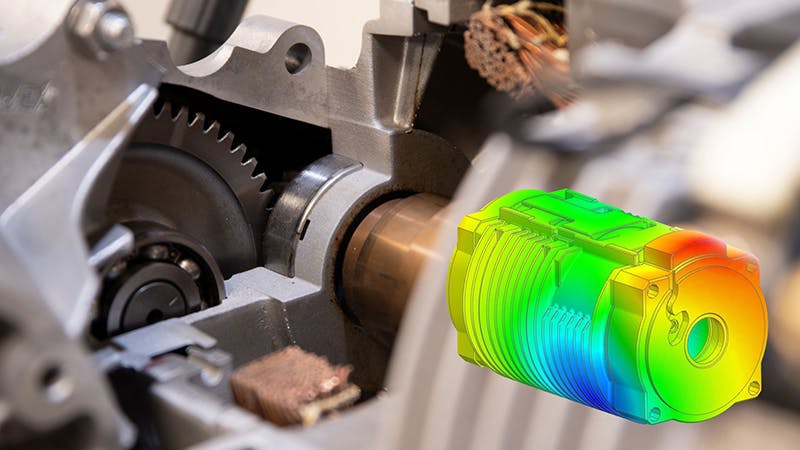In hybrid and electric vehicles, passengers often perceive the high-frequency tonal noise of electric motors combined with gearbox whine as annoying. E-drive manufacturers are looking for solutions to address e-motor noise, vibration, and harshness (NVH) early in the development cycle. But the complexity of motor types and configurations makes it difficult to find the perfect trade-off between efficiency and NVH performance.
This on-demand webinar will discuss e-drive solutions both in the early and detailed design stages. The intended audience is e-motor NVH, 3D CAE, and electromagnetic user communities, from experts to analysts, who endeavor to create an e-drive sound and performance that fits their brand.
Gain insights into finding the perfect trade-off between efficiency and NVH
The electric motor development process is challenging; It is repetitive, time-consuming, inflexible. The multiphysics required to reach a robust design relies on collaboration from multiple experts in different fields. Engineers must balance all aspects of development; e-motor design, brand requirements, structural analysis, thermal analysis, and NVH. Siemens' Electrified Vehicle Performance Engineering solution helps teams stay integrated by breaking down silos to enable one environment and workflow for maximum efficiency.
Reduce the risk of e-Drive NVH issues late in the design process
The early stage of e-drive development is where manufacturers make essential design choices for motor and gearbox performance. Part of this early development stage is an early qualitative NVH assessment of the inverter, transmission, and e-motor NVH to understand their impact on overall vehicle performance. This quick and easy evaluation of structural design and inverter control strategy radically reduces the risk of encountering e-drive NVH issues late in the design process.
Predict e-motor noise and identify system sensitivities in the concept phase
Once the electrical parameters of the motor and controls are fixed, engineers can concentrate on more precise prediction of electric motor noise in the detailed design phase. Simulations can be used to analyze the complete system, from electric currents to radiated noise, and integrate electromagnetic, structural, transmission multi-body, and acoustics analysis. The combination of loads and structural/vibro-acoustic model allows engineers to predict the NVH behavior of the e-powertrain. Afterward, the simulation model can evaluate the effect of all possible design modifications.
Watch the on-demand webinar to learn more about the solutions that can boost the NVH performance of your electric drive.
Meet the speaker

Alessandro Lepore
Business Development Manager
Alessandro has been with Siemens Digital Industries Software for 10 years, working in various roles in the Engineering and Consulting Services division. He is currently Business Development Manager responsible for global business development and go-to-market for Engineering Services Solutions, focusing on technologies that combine Test, 1D, and 3D CAE simulation, the automotive and transportation industry, NVH, acoustics, drivability and, ride and handling solutions.
